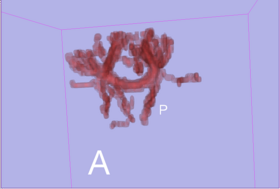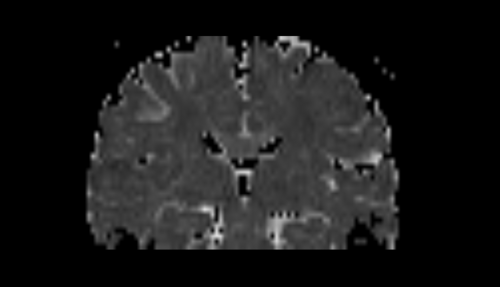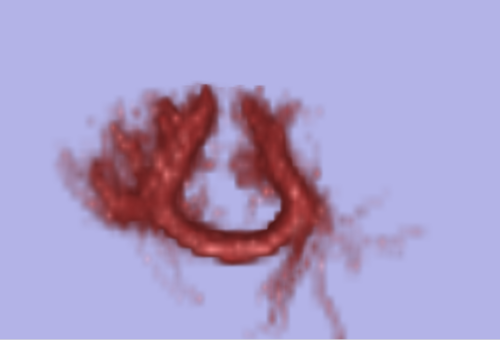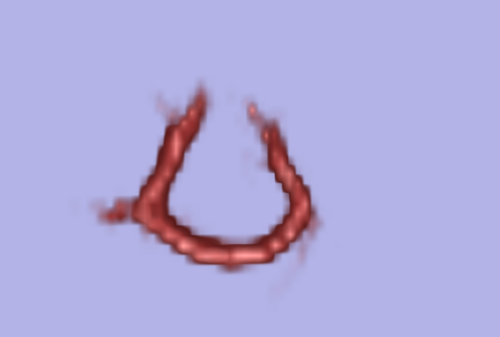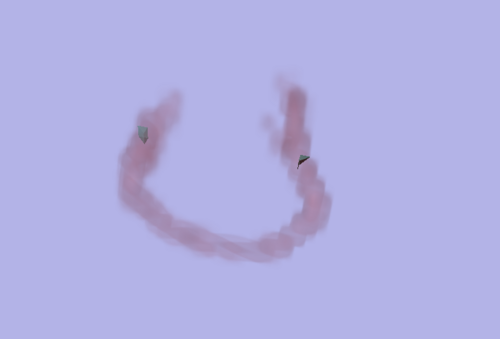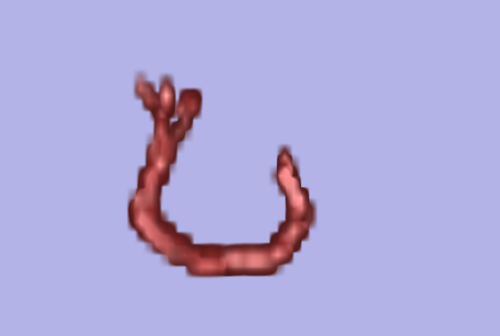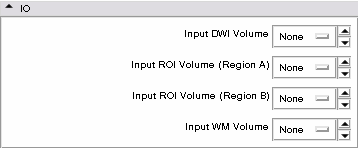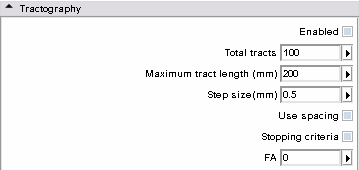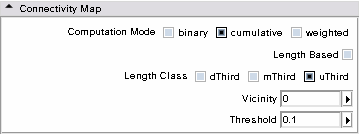Difference between revisions of "Modules:StochasticTractography-Documentation-3.4"
| (4 intermediate revisions by 2 users not shown) | |||
| Line 1: | Line 1: | ||
| − | + | [[Documentation-3.4|Return to Slicer 3.4 Documentation]] | |
| + | |||
| + | [[Announcements:Slicer3.4#Highlights|Gallery of New Features]] | ||
__NOTOC__ | __NOTOC__ | ||
===Module Name=== | ===Module Name=== | ||
| Line 19: | Line 21: | ||
* Author: Julien von Siebenthal | * Author: Julien von Siebenthal | ||
* Contributor: Steve Pieper | * Contributor: Steve Pieper | ||
| − | * Contact: | + | * Contact: Ryan Eckbo, PNL, reckbo at bwh.harvard.edu |
===Module Description=== | ===Module Description=== | ||
As a main purpose, the stochastic tractography module helps to evaluate connectivity between two regions of interest (ROIs) of the brain. These ROIs define generally grey matter regions having a specific neurophysiological function. Extensively, study involving more than two regions could still be done by pairing the regions two by two. | As a main purpose, the stochastic tractography module helps to evaluate connectivity between two regions of interest (ROIs) of the brain. These ROIs define generally grey matter regions having a specific neurophysiological function. Extensively, study involving more than two regions could still be done by pairing the regions two by two. | ||
| + | |||
| + | To go deeper into learning the module you can download the following [http://www.na-mic.org/Wiki/index.php/Python_Stochastic_Tractography_Tutorial tutorial] | ||
== Usage == | == Usage == | ||
| Line 90: | Line 94: | ||
|} | |} | ||
| − | + | ||
===Quick Tour of Features and Use=== | ===Quick Tour of Features and Use=== | ||
| Line 99: | Line 103: | ||
** Input ROI Volume (A/B): only 1 ROI is needed to achieve a tractography. If you want to evaluate the connection between two regions, you will give both ROIs | ** Input ROI Volume (A/B): only 1 ROI is needed to achieve a tractography. If you want to evaluate the connection between two regions, you will give both ROIs | ||
** Input WM Volume: a white matter mask can be given as input to use ones provided by other tools or Slicer modules - it will supersede the brain mask even if enabled. Be mindful in setting a WM: tractography results can be impaired by a too restrictive WM | ** Input WM Volume: a white matter mask can be given as input to use ones provided by other tools or Slicer modules - it will supersede the brain mask even if enabled. Be mindful in setting a WM: tractography results can be impaired by a too restrictive WM | ||
| − | ** You are not obliged to set the ROIs or the white matter mask to smooth the DWI, create the brain mask and the tensor. These 3 | + | ** You are not obliged to set the ROIs or the white matter mask to smooth the DWI, create the brain mask and the tensor. These 3 features just require a DWI |
{| | {| | ||
|[[Image:IOmenu.png|thumb|500px|IO step]] | |[[Image:IOmenu.png|thumb|500px|IO step]] | ||
Latest revision as of 21:14, 30 March 2010
Home < Modules:StochasticTractography-Documentation-3.4Return to Slicer 3.4 Documentation
Module Name
Stochastic Tractography
General Information
Module Type & Category
Type: Interactive
Category: DTI
Authors, Collaborators & Contact
- Author: Julien von Siebenthal
- Contributor: Steve Pieper
- Contact: Ryan Eckbo, PNL, reckbo at bwh.harvard.edu
Module Description
As a main purpose, the stochastic tractography module helps to evaluate connectivity between two regions of interest (ROIs) of the brain. These ROIs define generally grey matter regions having a specific neurophysiological function. Extensively, study involving more than two regions could still be done by pairing the regions two by two.
To go deeper into learning the module you can download the following tutorial
Usage
- You want to study fiber path from a single region of interest (ROI)
- You want to evaluate connectivity between two ROIs
Description
With the stochastic tractography module, you can:
|
|
|
|
|
|
Quick Tour of Features and Use
|
|
|
|
|
|
Development
Dependencies
Volumes
Known bugs
Follow this link to the Slicer3 bug tracker.
Usability issues
Follow this link to the Slicer3 bug tracker. Please select the usability issue category when browsing or contributing.
Source code & documentation
More Information
Acknowledgment
National Alliance for Medical Image Computing (NAMIC), funded by the National Institutes of Health through the NIH Roadmap for Medical Research, Grant U54 EB005149 (to Ron Kikinis, Marek Kubicki).
References
- Björnemo M, Brun A, Kikinis R, Westin CF. Regularized stochastic white matter tractography using diffusion tensor MRI. In Fifth International Conference on Medical Image Computing and Computer-Assisted Intervention (MICCAI'02). Tokyo, Japan, 2002;435-442.
- Friman, O., Farneback, G., Westin CF. A Bayesian Approach for Stochastic White Matter Tractography. IEEE Transactions on Medical Imaging, Vol 25, No. 8, Aug. 2006
- Shenton, M.E., Ngo, T., Rosenberger, G., Westin, C.F., Levitt, J.J., McCarley, R.W., Kubicki, M. Study of Thalamo-Cortical White Matter Fiber Tract Projections in Schizophrenia Using Diffusion Stochastic Tractography. Poster presented at the 46th Meeting of the American College of Neuropsychopharmacology, Boca Raton, FL, December 2007.

